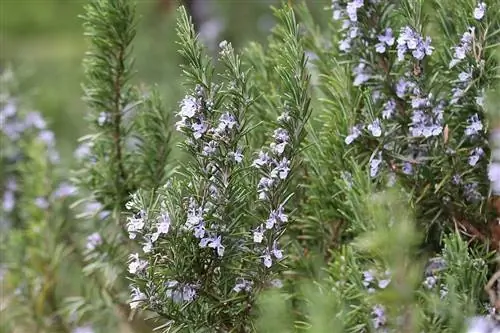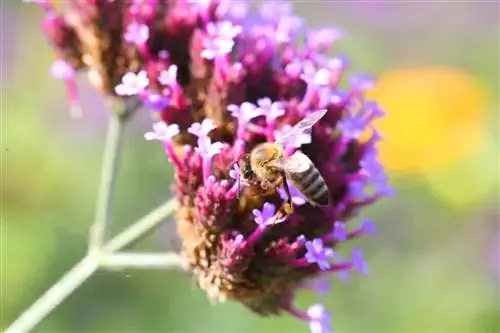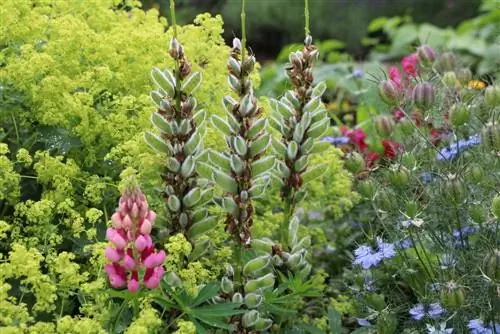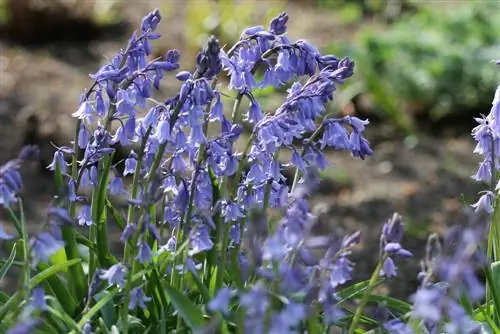- Author admin [email protected].
- Public 2023-12-17 03:39.
- Last modified 2025-01-24 12:45.
Rosemary needles are an aromatic seasoning. Since it cannot withstand higher temperatures below zero, it is hibernated indoors in our latitudes. Older plants shine with their flowers in spring.
Origin
The culinary herb comes from the Mediterranean region and grows wild there as an evergreen subshrub that grows up to 2 m high. In its homeland, the rosemary bush blooms all year round. The blue flowers are very popular with insects and are often flown to.
Care as a culinary herb
In Germany, rosemary is not hardy, except in very mild regions or with certain varieties. It is often grown as a container plant and overwinteres indoors. However, this also affects the flowering time.
When it blooms here
After the winter, the potted plant is put back outdoors. Since rosemary is not quite as sensitive to cold, some of it can go outdoors as early as March. Then, or in late winter, the plant is cut back. This means it grows bushier and branches better.
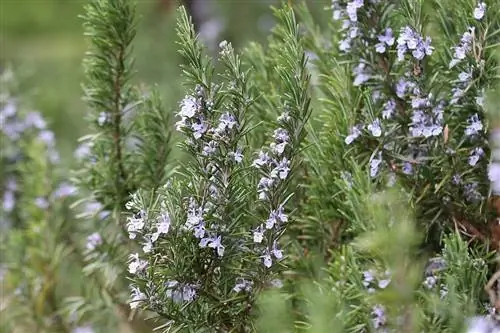
Shortly after clearing out, sometimes as early as March, the flowers form. They are located around the shoot ends in the leaf axils. More flowers will form until May. A few varieties only bloom in September.
Note:
If the culinary herb is cut back heavily after flowering, it can bloom a second time in summer.
The rosemary blossom
The culinary herb is a mint family. The colors vary depending on the variety:
- blue
- blue violet
- light blue
- pink
- white
The taste and aroma of the plant do not change. It is not necessary to prevent flowering or trim away flowering branches. On the contrary, the flowers are also edible and enrich the kitchen with their decorative appearance. They are used in salads or baked goods. The flowers lose their aroma when cooked, so they are only used raw. The needles, on the other hand, release their flavor into the food while they cook.
If the flower fails to bloom
The plant may have been cut back too much or it may have been too warm in the winter quarters. The plant needs a winter temperature reduction to form flowers. Temperatures of around 10 degrees in winter are sufficient for rosemary, it can even tolerate lower temperatures of up to minus 8 degrees. Under no circumstances should it be too wet, as this affects its frost hardiness. Nutrient supply is of less importance for the flower; as a weak feeder, the herb hardly needs any additional nutrients.
Note:
An unheated greenhouse where there is not too much frost is well suited for rosemary plants.


